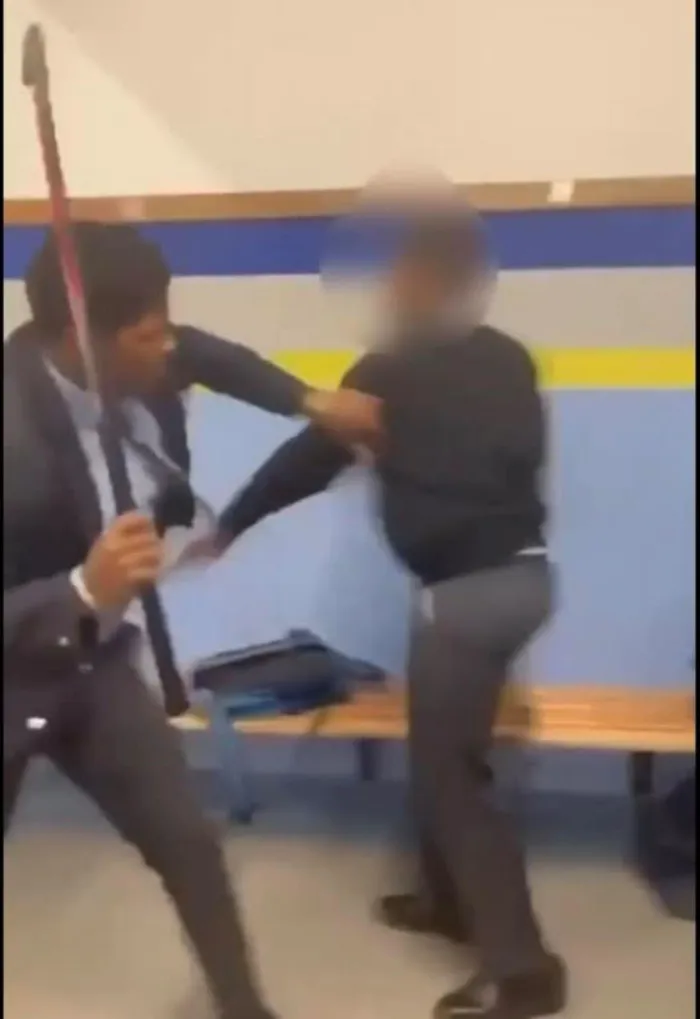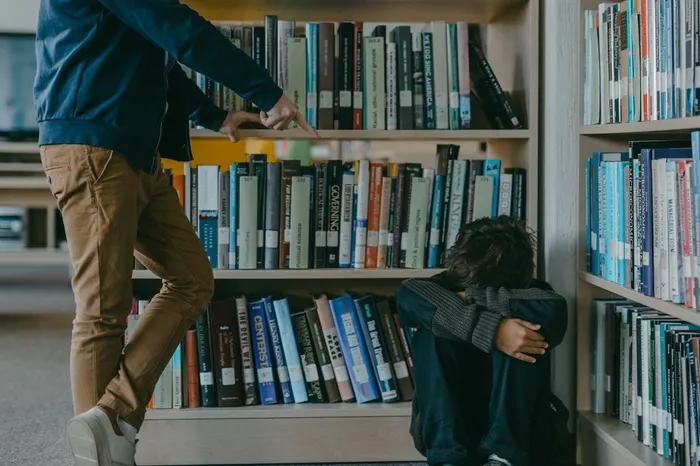Siv Ngesi slams Milnerton High School bullies after viral video outrage

A screengrab of the video of the bullying incident at Milnerton High School.
Image: Facebook.
"Name and shame them" is the cry from many South Africans following the viral Milnerton High School bullying incident, which has drawn strong criticism across the country.
Cape Town-based socialite Siv Ngesi was leading the charge and was among the first to share the video on social media, writing, “Name and shame all these little b*****s! I hate bullies! But I do love bullying bullies!”
He later added that he and others were searching for the boy who was assaulted to offer support.
The footage, reportedly filmed at Milnerton High School, shows a group of boys hitting a classmate with what appears to be a pipe while others laugh and cheer. The boy’s pain, visible, raw and humiliating, has ignited national outrage and a painful conversation about the dark reality of school bullying.
For a parent, nothing is worse than seeing your child suffer, knowing you couldn’t protect them. Many South Africans felt this same pain this week when a video spread online showing the Cape Town schoolboy being violently attacked by other students.
One X user wrote: "The ripple effects: When the bruises fade, but the damage doesn’t".
We keep saying ‘not again,’ but it keeps happening, another X user wrote. “Our schools are becoming trauma zones.”
Another parent commented, “It’s not just about discipline, where’s the empathy being taught at home?”
“Bullying doesn’t end when the video stops trending,” wrote another user on Ngesi’s post. "It reshapes how children see themselves, their relationships, and their place in the world.”
The victim’s mother, in a heartbreaking statement, confirmed her son, a Grade 10 learner, had endured “bullying, assault, harassment and emotional abuse” from some of the school’s rugby players.
“These boys should embody leadership and discipline. Instead, they’ve chosen to harm. To Milnerton High School, it is your duty to protect your students," she said.
Following the video's viral spread, an assault investigation has been launched by the police, and eight learners have been suspended.
This is not the first time South Africa has been forced to confront the horror of bullying. Lufuno Mavhunga (2021), Mbali Mlaba (2025) and Joseph Maimela (2024) remind us of the devastating consequences that can result from relentless bullying. Each story ended in suicide.
October marks Bullying Prevention Month, but for South African learners, bullying doesn't choose just one month. The Trends in International Mathematics and Science Study (TIMSS) found that 64% of Grade 9 learners experience some form of bullying monthly, a rate that barely changed since 2019 (65%).
According to Harrington Johnson Wands Attorneys, more than 3.2 million learners are bullied annually, and nearly 160,000 high school students skip school daily just to avoid being targeted.
The reality is devastating, for every viral video that shocks the internet, there are countless untold stories of silent suffering.

In the face of relentless bullying and trauma, South Africans must unite to support victims and work towards transformative change in schools.
Image: Mikhail Nilov/pexels
“Bullying doesn’t end when the video stops trending,” wrote another user in Ngesi’s post. It reshapes how children see themselves, their relationships, and their place in the world.”
Research from the Centers for Disease Control and Prevention (CDC) shows that children who are bullied are at higher risk of developing depression, anxiety, eating disorders and post-traumatic stress that can persist into adulthood. Many struggle academically, avoid school, or drop out altogether.
Even worse, victims often blame themselves. The South African Depression and Anxiety Group (SADAG) reports that bullied learners frequently internalise guilt and shame, leading to chronic low self-esteem or suicidal ideation.
“We’ve seen an increase in children under 15 seeking help for anxiety and trauma after being bullied,” SADAG said in a 2024 statement.
But here’s the uncomfortable truth: the bullies themselves are not unscathed. Studies suggest that students who engage in bullying behaviour are more likely to struggle with aggression, substance abuse and criminal activity later in life.
It’s a cycle of pain that starts in the classroom and often ends in tragedy.
Bullying isn’t “kids being kids”.
In too many schools, reporting bullying still carries stigma or fear of retaliation. Two-thirds of learners admit they don’t report incidents because they believe nothing will change.
Meanwhile, schools often handle cases quietly, preferring to “resolve” matters internally rather than risk public backlash. But silence doesn’t protect reputations; it destroys lives.
What parents and pupils can do
According to South African law, parents and pupils can report bullying to the police, which may result in legal action depending on the bully's age and the severity of the act.
- Parents, teach empathy to your children from an early age to help prevent bullying.
- Schools must take stronger disciplinary action.
- Communities must rally around victims instead of gossiping about them.
- Tell a trusted adult, like a teacher, about the bullying immediately.
- If you see someone else being bullied, tell a teacher when it's safe to do so.
- Parents should immediately report the situation to the school principal or senior teacher.
- Document everything: Keep a record of what happened, who was involved, and when and where it occurred.
- You can claim damages from the school, the Department of Education, or the bully, depending on the specific circumstances.
If your child is being bullied or you suspect they are, reach out to the South African Depression and Anxiety Group (SADAG) at 0800 21 22 23 or visit sadag.org